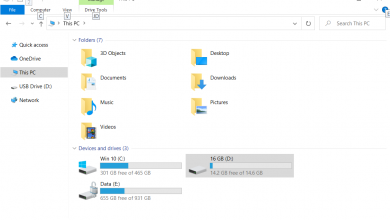How to Block Windows Store in Windows 10 and Windows Server 2019
Windows Store is a software platform owned by Microsoft that gives us the possibility to download different apps for personal and business purposes. It is available since Windows 8 and Windows Server 2012. Sometimes, there is a need to disable Windows Store from running, which means the user will not be able to download and install any apps from Windows Store. In this kind of scenario, especially in a business environment, we will need to disable the Windows Store.
There are multiple ways to disable Windows Store on Windows 10 machines. In case your Windows 10 machine is part of a decentralized network infrastructure such as Workgroup, you can disable Windows Store by using Local Group Policy or AppLocker. We will cover both ways in this article.
In case your Windows 10 machine is part of Domain infrastructure, then you can disable Windows Store directly from Windows Server that acts as Domain Controller.
The disabled Windows Store will also reflect on installed app updates.

1. Block Windows Store using Local Group Policy in Windows 10
In case you want to disable Windows Store on a Windows machine that is not part of domain infrastructure, but a workgroup, you would need to do it using Local Group Policy. We will show you how to do it on Windows 10 machine, but this procedure is also compatible with Windows 8 and Windows 8.1. If you have several machines that are part of the same Workgroup, you will need to repeat the procedure on each Windows machine.
- Right-click on Start Menu and click on Run
- Type gpedit.msc and press Enter
- Expand Computer Configuration > Administrative Templates > Windows Components > Store
- Right-click on Turn off the Store application and then click on Edit
- Select Enabled, click on Apply, and then click OK. If you enable this setting, access to the Store application is denied. If you disable or do not configure this setting, access to the Store application is allowed.

- Right click on the Start menu and then click on Windows PowerShell (Admin). In case you do not see Windows PowerShell (Admin), but Command Prompt (Admin), you can do it also in that way.
- Type gpupdate /force and press In this step, we will force an update for the configured policy, so that Windows Store is disabled. We can also do the same by restarting the Windows machine. As you can see, in our case, the computer policy update has completed successfully. The Windows Store is blocked.
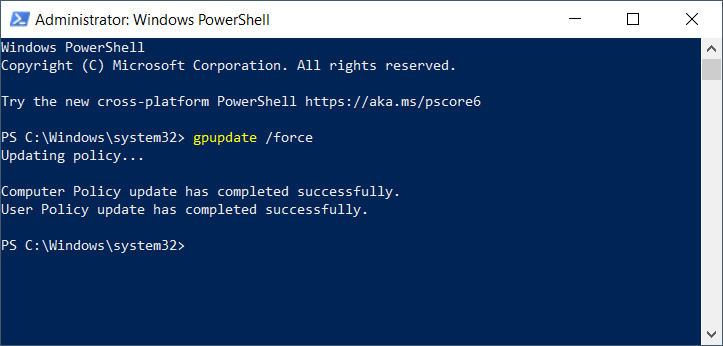
2. Block Windows Store using AppLocker in Windows 10
The second way of disabling Windows Store or any other application is by using AppLocker. We will show you how to do it on Windows 10 machine, but this procedure is also compatible with Windows 8 and Windows 8.1. If you have several machines that are part of the same Workgroup, you will need to repeat the procedure on each Windows machine.
- Left-click on Start menu and type secpol to open Local Security Policy
- Right-click on secpol and click on Run as administrator
- Expand Application Control Policies > AppLocker and then click Packaged app Rules
- Right-click on Packaged app Rules and then click on Create New Rule
- Under Before Your Begin click on Next
- Under Permissions click on Action > Deny to block Windows Store
- Under User a group choose the user or group which should not be able to run Windows Store. We will apply this rule to Everyone.
- Click on Next

- Select on Use an installed packages app as a reference and then click on Select

- Select Windows Store from the list and then click on OK.

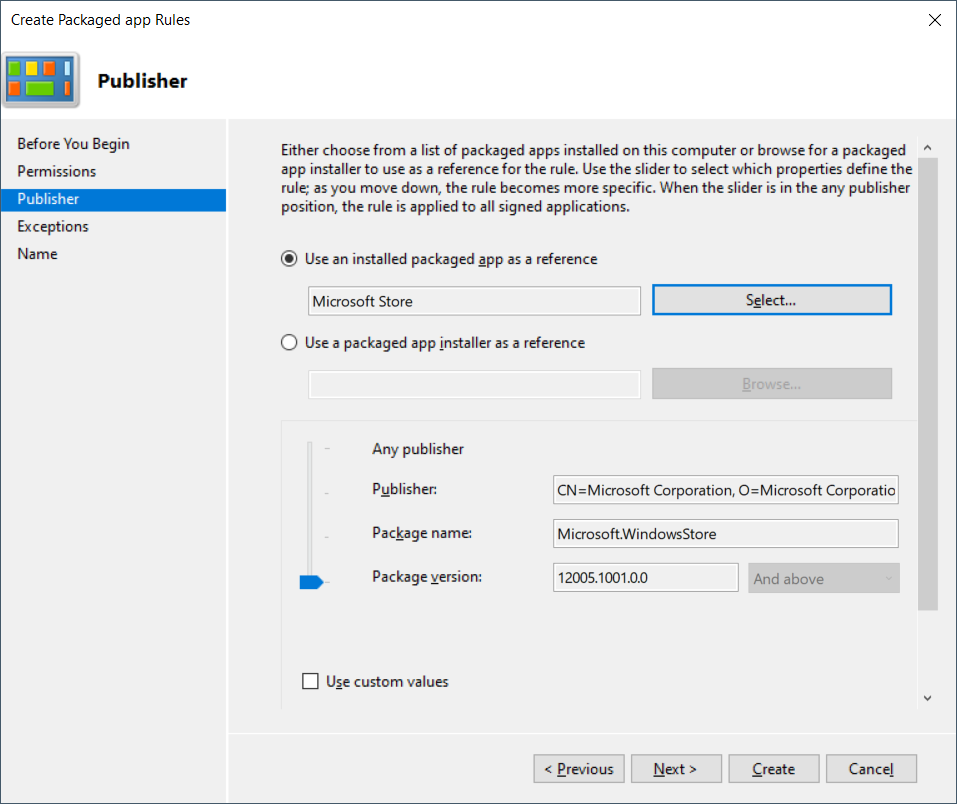
- Click on Next
- Under Exceptions click on Next.
- Under Name and Description type the name and description (optional) and then click on Create
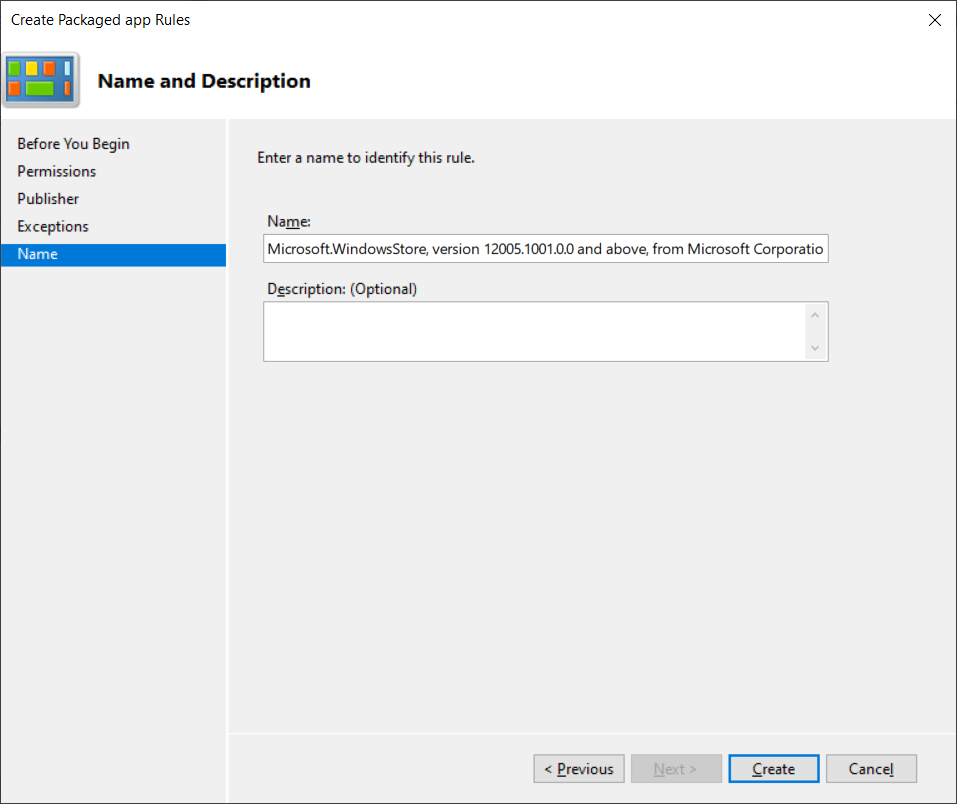
- You have successfully created a policy. The Windows Store is blocked.
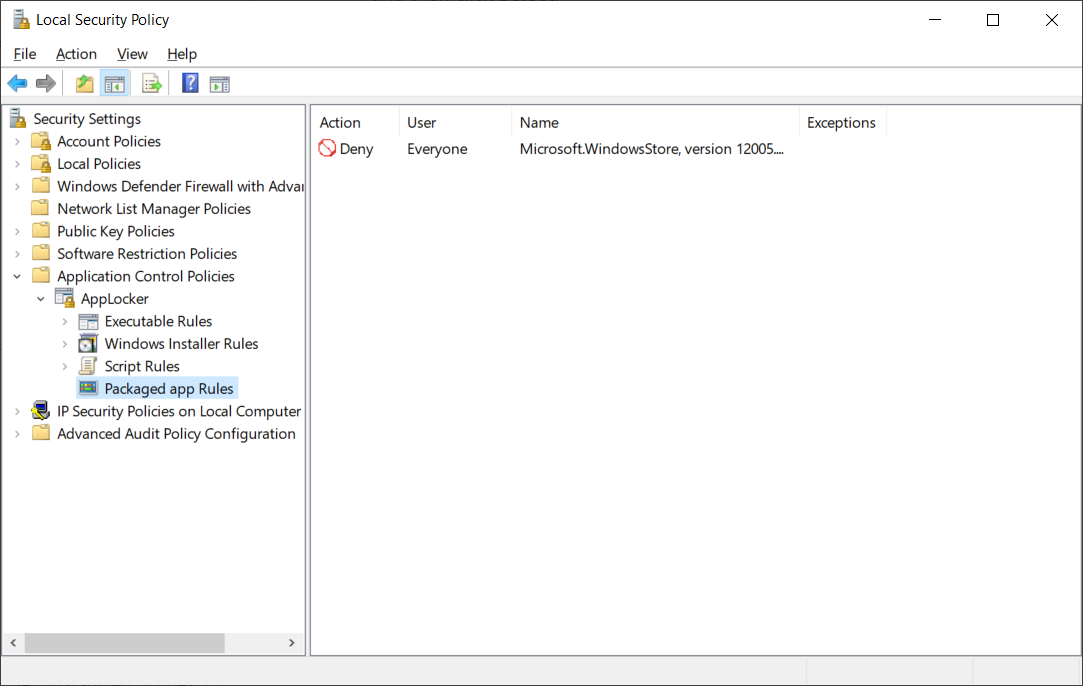
3. Block Windows Store using Group Policy Management in Windows Server 2019
The most convenient way of configuring or disabling Windows Store or any other application is by using Group Policy Management in Domain infrastructure. The requirement is that all Windows 10 machines are part of the same domain. Once you configure a group policy on your Domain Controller, you will be able to distribute it on thousands of Windows machines in a few clicks. We will show you how to do it on Windows Server 2019, but this procedure is also compatible with Windows Server 2012, Windows Server 2012 R2, and Windows Server 2016.
- Open Server Manager
- Click on Tools and then click Group Policy Management
- Expand forest
- Right-click on the domain and then click New Organizational Unit. We will create a new OU. In case you already have dedicated OU for certain Windows machines, you can create a policy in that OU and apply on all machines.
- Type the name of the OU and then click on OK
- Right-click on OU and then click on Create a GPO in this domain, and Link it here
- Type the name of a new group policy and then click on OK
- Right-click on group policy and then click on Edit
- Expand User Configuration > Administrative Templates > Windows Components > Store
- Right-click on Turn off the Store application and then click on Edit

- Select Enabled and then click on Apply and then OK. If you enable this setting, access to the Store application is denied. If you disable or do not configure this setting, access to the Store application is allowed.
- Right click on the Start menu and then click on Windows PowerShell (Admin).
- Type gpupdate /force and press In this step, we will force an update for the configured policy, so that Windows Store is disabled on target machines. The applied group policy will be available on Windows 10 machines after reboot. As you can see, in our case, the computer policy update has completed successfully. The Windows Store is blocked.

4. Block Windows Store using the Registry Editor in Windows 10
Another method for disabling the Windows Store is by using the Registry Editor. This is also the only available method for the Windows Home edition because the Local Group Policy Editor isn’t available for that specific Windows edition. If you already used the Local Group Policy Editor, then the Registry Editor will automatically update the value for that specific setting. This method is a bit technical because the user is required to create the missing key or value for the setting to work. A single wrong configuration in the Registry can cause issues for the working of the system. We always recommend users to create a backup before making any new changes in the Registry. By following the below steps, you can safely configure the setting without any issues:
- Hold the Windows key and press R to open the Run dialog box on your system. Now type the “regedit” in the box and press the Enter key to open the Registry Editor. When prompted by the UAC (User Account Control), click on the Yes button.
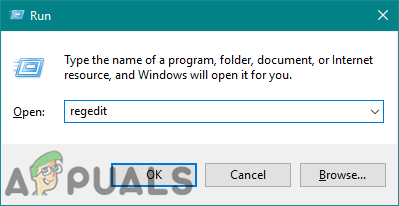
Opening the Registry Editor - In the Registry Editor window, you need to navigate to the following key:
HKEY_LOCAL_MACHINE\SOFTWARE\Policies\Microsoft\WindowsStore
- If the following key is missing, you can create it by right-clicking on the Microsoft key and choosing the New > Key option. Rename the key as “WindowsStore” and select it.
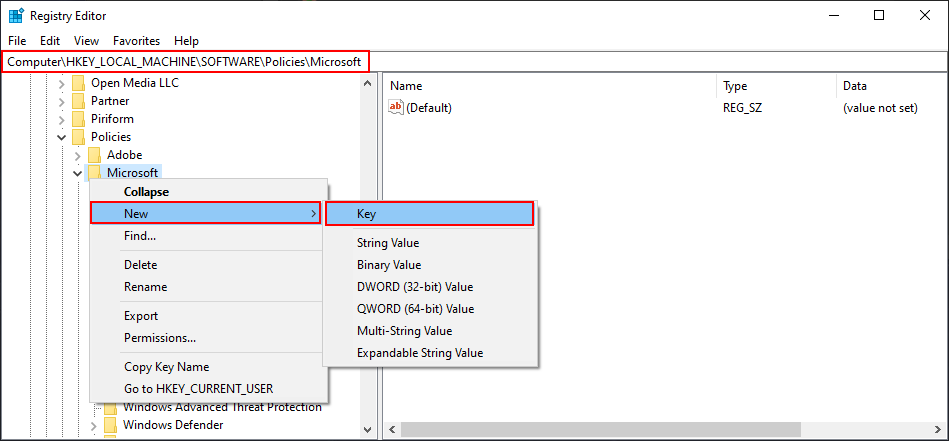
Creating a new key - Now in the WindowsStore key, right-click on the right pane and choose the New > DWORD (32-bit) Value option. Now name this value as “RemoveWindowsStore“.
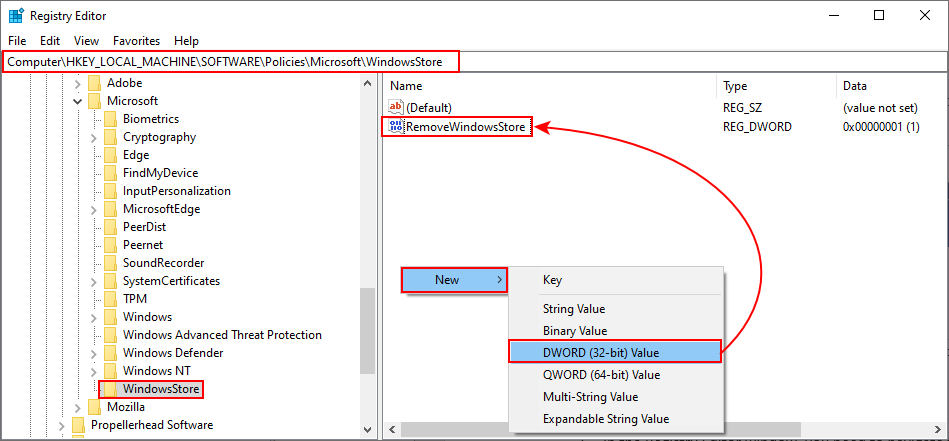
Creating a new value - Double-click on the value to open it and then change the value data to 1.
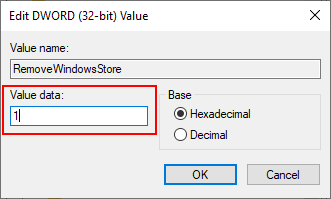
Enabling the value - To apply these changes to your system, make sure you restart the computer. This will disable the Windows Store on your system.
- You can always enable it back by changing the value data to 0. You can also simply remove the value from the Registry to enable the Windows Store again.





